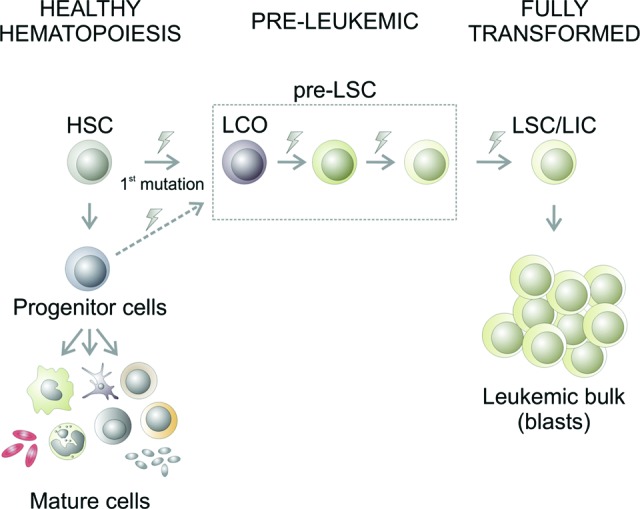Figure 1.

Multistep transformation of leukemia stem cells. During healthy hematopoiesis (displayed on the left), HSC give rise to committed progenitor cells that further differentiate into all mature blood cell types. Leukemia arises from hematopoietic cells that have progressively acquired genetic and/or epigenetic modifications (represented by lightning bolt symbols) and ultimately form self-renewing LSC, also known as LIC, that sustain the disease. An initial (“founding”) mutation in HSC or progenitor cells originates the LCO. During the preleukemic stage, the LCO and subsequent preleukemic stem cell stages (pre-LSC) progressively acquire further aberrations and finally generate fully transformed LSC/LIC, which are functionally defined by their ability to initiate disease upon transplantation. These aberrations, illustrated by lightning bolt symbols, include mutations or deregulation of transcription factors, epigenetic factors, metabolic factors, and proteins involved in signal transduction and cell cycle regulation. LSC/LIC are self-renewing and contain a full set of genetic and epigenetic changes that lead to blocked hematopoietic differentiation and the accumulation of dysfunctional leukemic blasts that form the bulk of the tumor cells but are not capable of initiating/maintaining the disease on their own. Abbreviations: HSC, hematopoietic stem cell; LCO, leukemia cell-of-origin; LIC, leukemia-initiating cell; LSC, leukemia stem cell.
